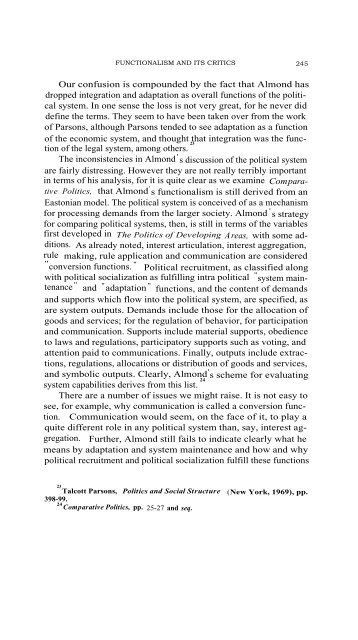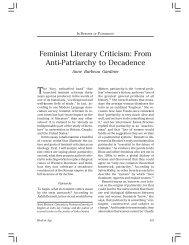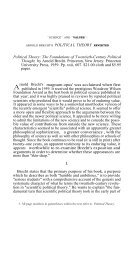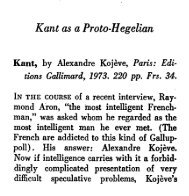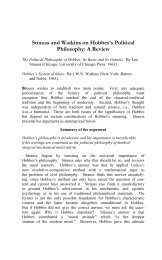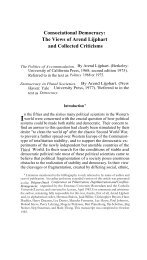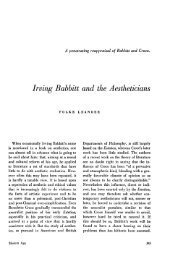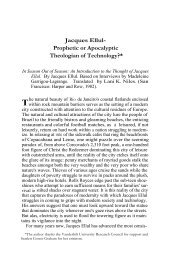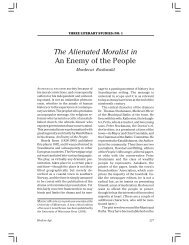FUNCTIONALISM AND ITS CRITICS - Intercollegiate Studies Institute
FUNCTIONALISM AND ITS CRITICS - Intercollegiate Studies Institute
FUNCTIONALISM AND ITS CRITICS - Intercollegiate Studies Institute
You also want an ePaper? Increase the reach of your titles
YUMPU automatically turns print PDFs into web optimized ePapers that Google loves.
<strong>FUNCTIONALISM</strong> <strong>AND</strong> <strong>ITS</strong> <strong>CRITICS</strong> 245<br />
Our confusion is compounded by the fact that Almond has<br />
dropped integration and adaptation as overall functions of the political<br />
system. In one sense the loss is not very great, for he never did<br />
define the terms. They seem to have been taken over from the work<br />
of Parsons, although Parsons tended to see adaptation as a function<br />
of the economic system, and thought that integration was the function<br />
of the legal system, among others. 23<br />
The inconsistencies in Almond ' s discussion of the political system<br />
are fairly distressing. However they are not really terribly important<br />
in terms of his analysis, for it is quite clear as we examine Comparative<br />
Politics, that Almond ' s functionalism is still derived from an<br />
Eastonian model. The political system is conceived of as a mechanism<br />
for processing demands from the larger society. Almond ' s strategy<br />
for comparing political systems, then, is still in terms of the variables<br />
first developed in The Politics of Developing Areas, with some additions.<br />
As already noted, interest articulation, interest aggregation,<br />
rule making, rule application and communication are considered<br />
" conversion functions. " Political recruitment, as classified along<br />
with political socialization as fulfilling intra political " system maintenance<br />
" and " adaptation " functions, and the content of demands<br />
and supports which flow into the political system, are specified, as<br />
are system outputs. Demands include those for the allocation of<br />
goods and services; for the regulation of behavior, for participation<br />
and communication. Supports include material supports, obedience<br />
to laws and regulations, participatory supports such as voting, and<br />
attention paid to communications. Finally, outputs include extractions,<br />
regulations, allocations or distribution of goods and services,<br />
and symbolic outputs. Clearly, Almond ' s scheme for evaluating<br />
system capabilities derives from this list. 24<br />
There are a number of issues we might raise. It is not easy to<br />
see, for example, why communication is called a conversion function.<br />
Communication would seem, on the face of it, to play a<br />
quite different role in any political system than, say, interest aggregation.<br />
Further, Almond still fails to indicate clearly what he<br />
means by adaptation and system maintenance and how and why<br />
political recruitment and political socialization fulfill these functions<br />
23<br />
Talcott Parsons, Politics and Social Structure (New York, 1969), pp.<br />
398-99.<br />
24 Comparative Politics, pp. 25-27 and seq.


